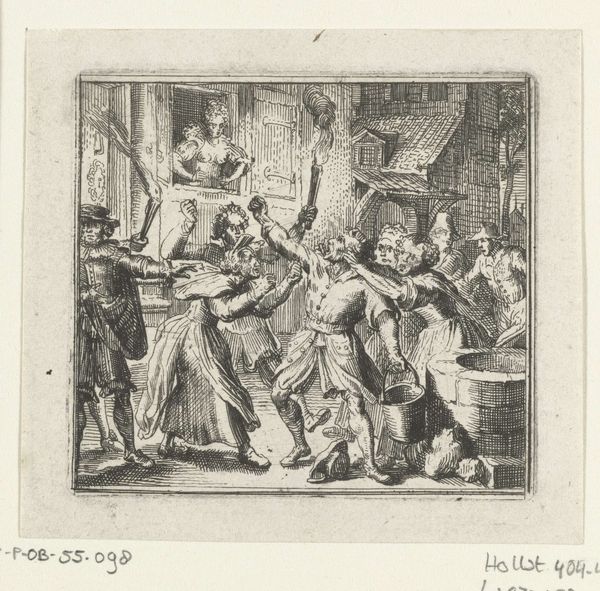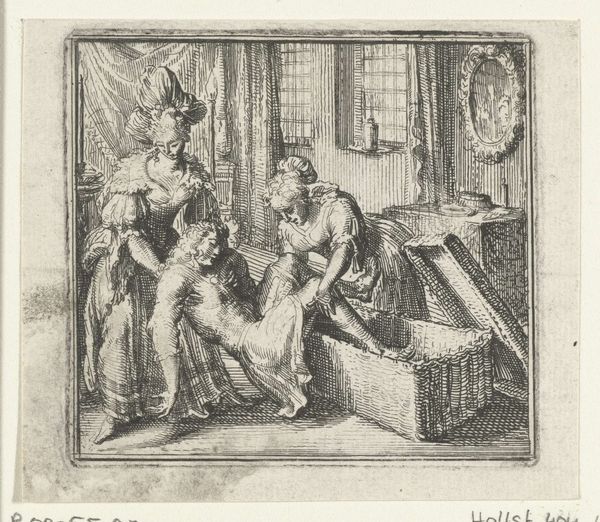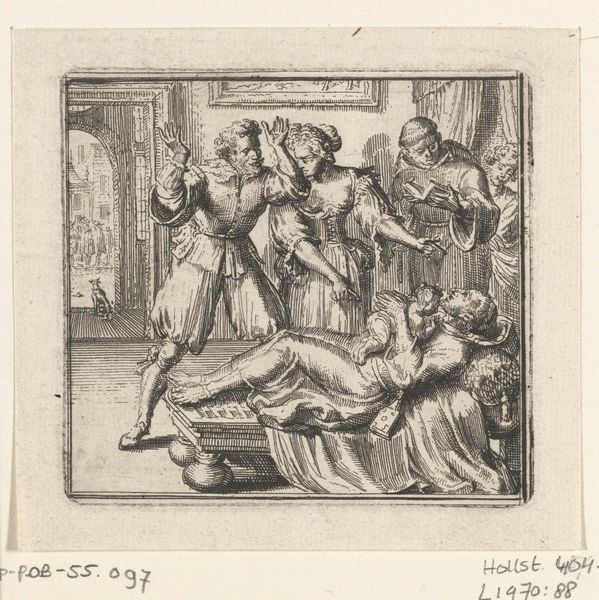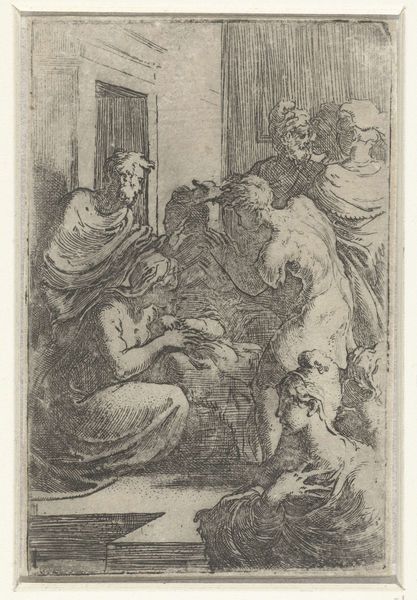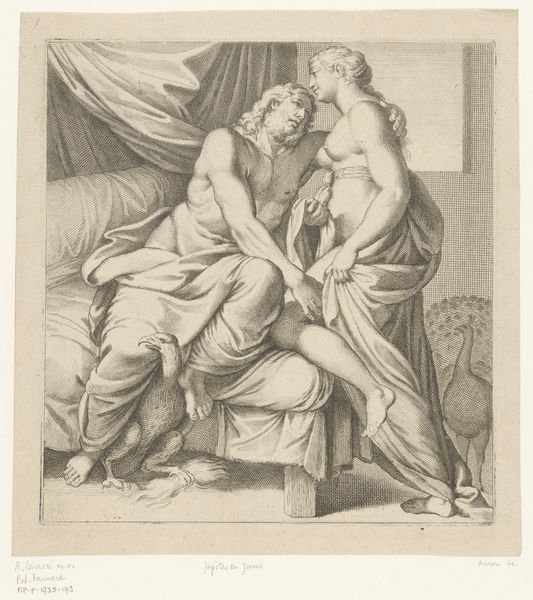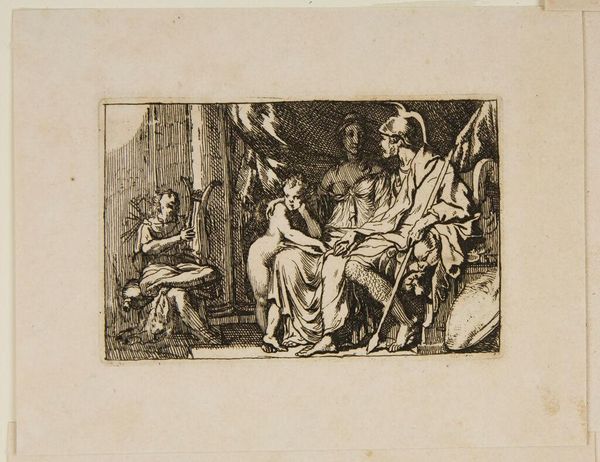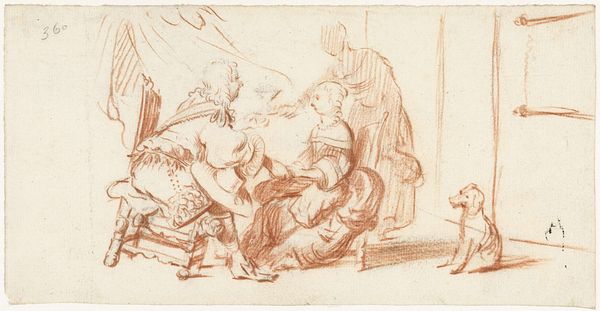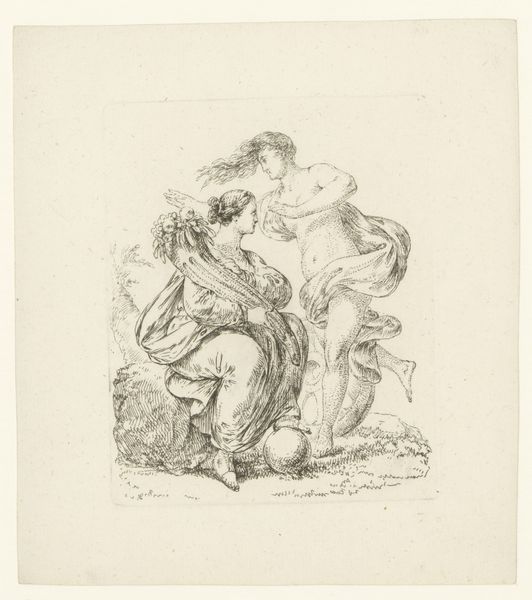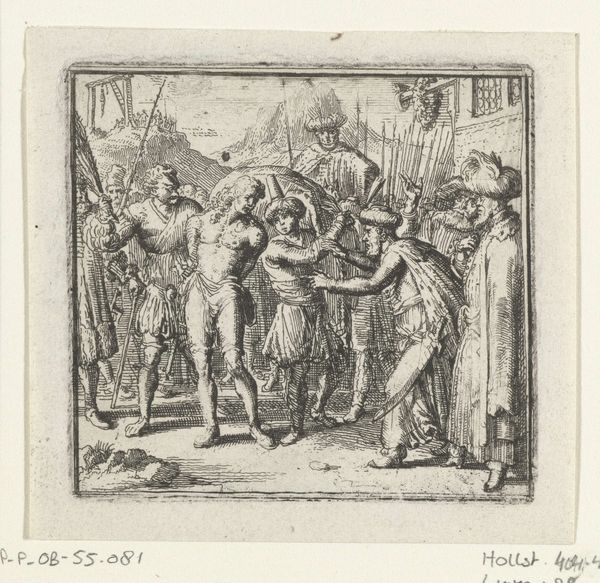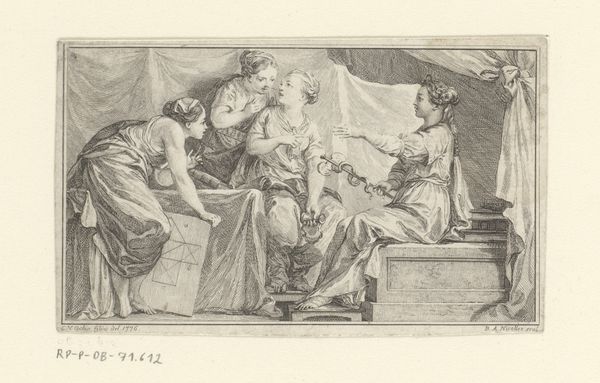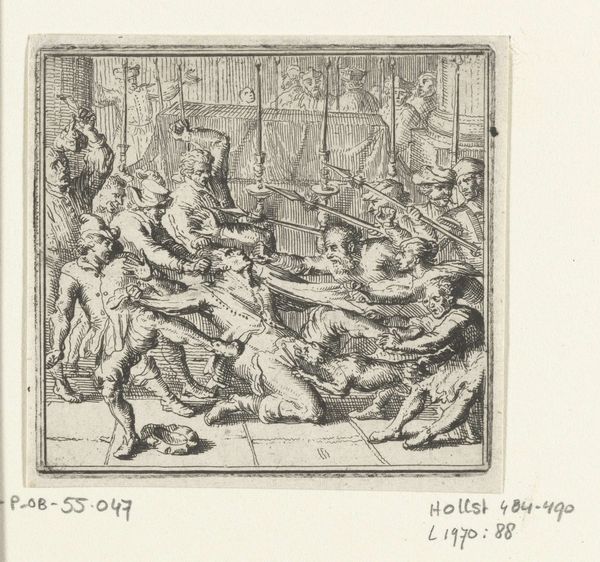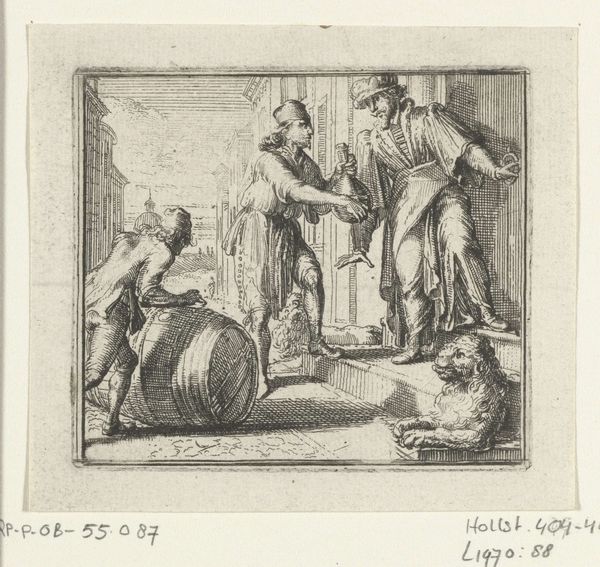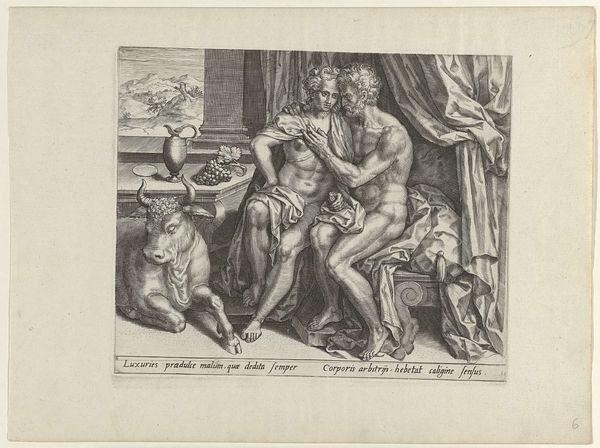
print, etching, pen, engraving
#
comic strip sketch
#
narrative-art
#
baroque
#
mechanical pen drawing
# print
#
etching
#
old engraving style
#
figuration
#
personal sketchbook
#
sketchwork
#
pen-ink sketch
#
line
#
pen work
#
sketchbook drawing
#
pen
#
history-painting
#
storyboard and sketchbook work
#
sketchbook art
#
engraving
Dimensions: height 73 mm, width 79
Copyright: Rijks Museum: Open Domain
Curator: Let’s turn our attention to this intriguing etching, made in 1697 by Romeyn de Hooghe. It's called "Illustration for Boccaccio’s Decameron" and resides here at the Rijksmuseum. Editor: Oh, it feels so intimate, like a stolen moment captured with just pen strokes. There's a raw, almost humorous quality, despite the fine detail in the figures. The light seems to be hiding something. Curator: Precisely. De Hooghe, celebrated for his detailed historical and allegorical prints, here engages with narrative art, visualizing scenes from Boccaccio's famous collection of novellas. It showcases how printmaking facilitated the widespread dissemination of stories and ideas. Consider also, how engravings democratized access to art, breaking away from elite patronage. Editor: Democratized storytelling, love that! It makes me think of eavesdropping on a scandalous secret, with the almost comic drama of it all playing out against this architectural backdrop. Notice how one of the ladies covers her ears and is appalled at this interaction while in the same field of vision the two folks at hand have a playful interaction? Almost staged. It reminds me of a bawdy stage play. Curator: That theatrical staging aligns with the Baroque style, its emphasis on drama, contrast, and dynamic movement. Look closely at the marks and line work. How do these reveal a skilled craftsman mastering the tools of their trade to create depth, texture, and tell a story through mass production. What does it tell us about printmaking production processes and workshops in that time period? Editor: Absolutely. It speaks volumes, no pun intended! The hatching and cross-hatching, those delicate lines create shading like whispered suggestions. De Hooghe seems to enjoy the technical demands to let his imagination run free, the print itself being evidence of his creative sprint. It invites a kind of storytelling of our own making... what do you think these characters are really saying to each other? Curator: By observing details like these, we can truly see the piece. I can also consider it in its full social and art historical frame. De Hooghe masterfully uses available material and tools to transform a well-regarded Italian novel into a shared cultural currency accessible across societal echelons of late 17th century Europe. Editor: Right. Looking at this sketch is to be immersed within the playful collision of story and social mores. A tangible representation, of the ephemeral whispered anecdote or funny secret between friends.
Comments
No comments
Be the first to comment and join the conversation on the ultimate creative platform.
